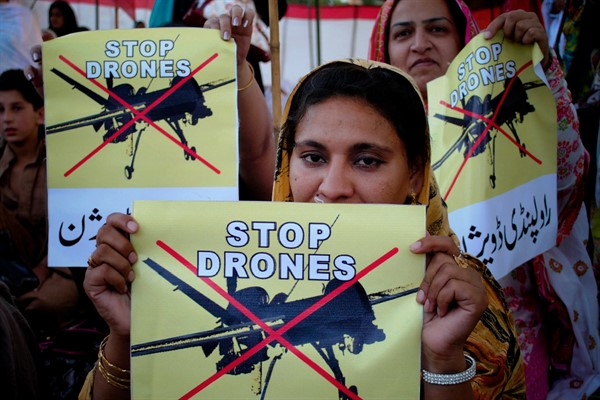When it comes to armed drones, is smaller and more precise necessarily better? The question came to my mind upon seeing the news that the U.S. Air Force just successfully test-launched a new weaponizable drone, the ALTIUS-600, making it the smallest drone in operation. Even more remarkably, this tiny aircraft was launched from the second-smallest-drone, the Kratos XQ-58A Valkyrie, while the Valkyrie was in flight.
There is nothing objectionable about the development of mini-drones. One could even argue they would be improvements, in humanitarian terms, over the use of the much larger Reaper to deliver 500-pound bombs in allegedly “precise” strikes that instead often sweep up scores of civilians and destroy the property their surviving family members rely on for their livelihoods.
But the U.S. military’s obsession with minimalism—from fewer boots on the ground to lower-payload munitions—also minimalizes public engagement with the wider ethics of armed violence.

